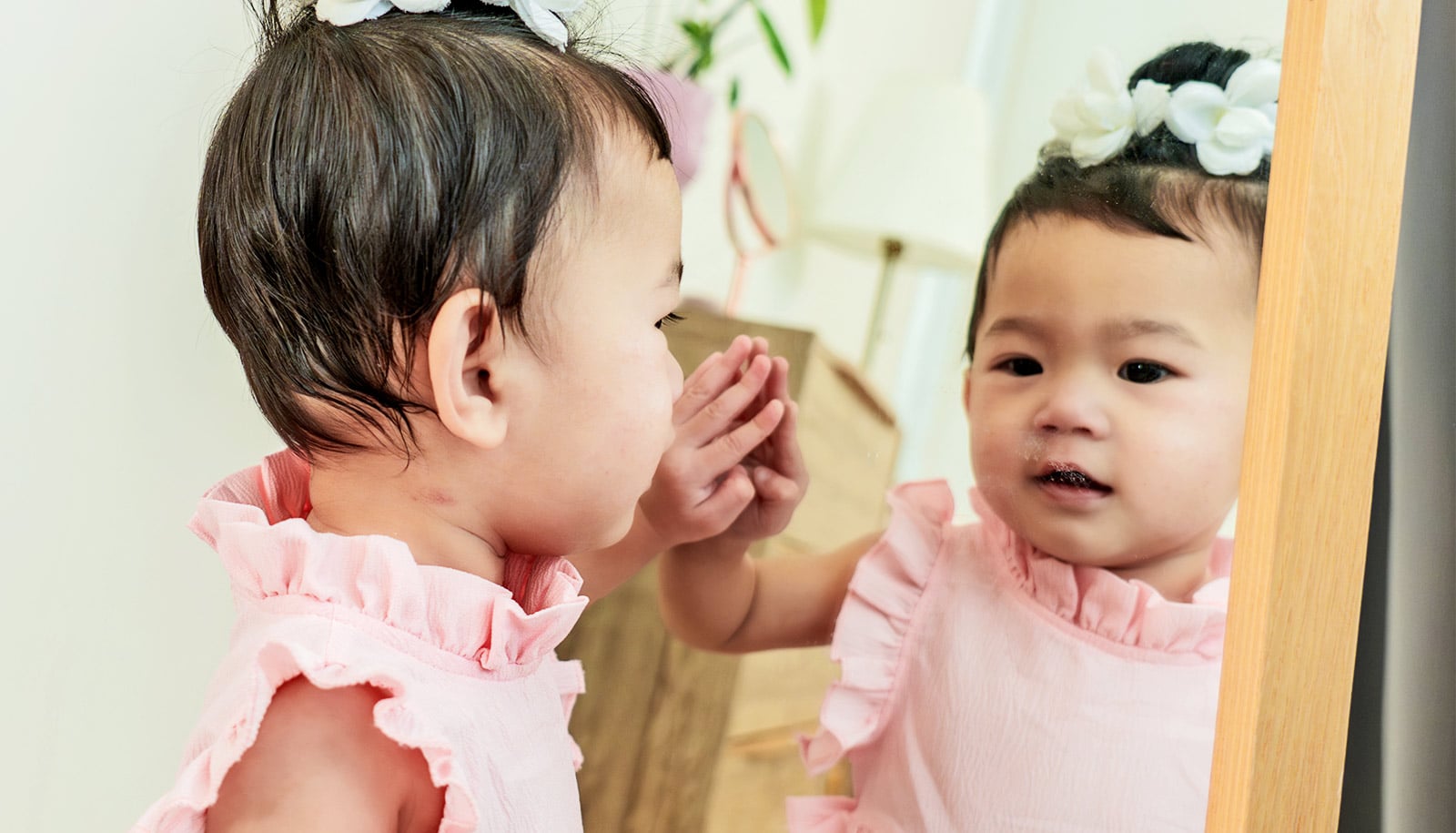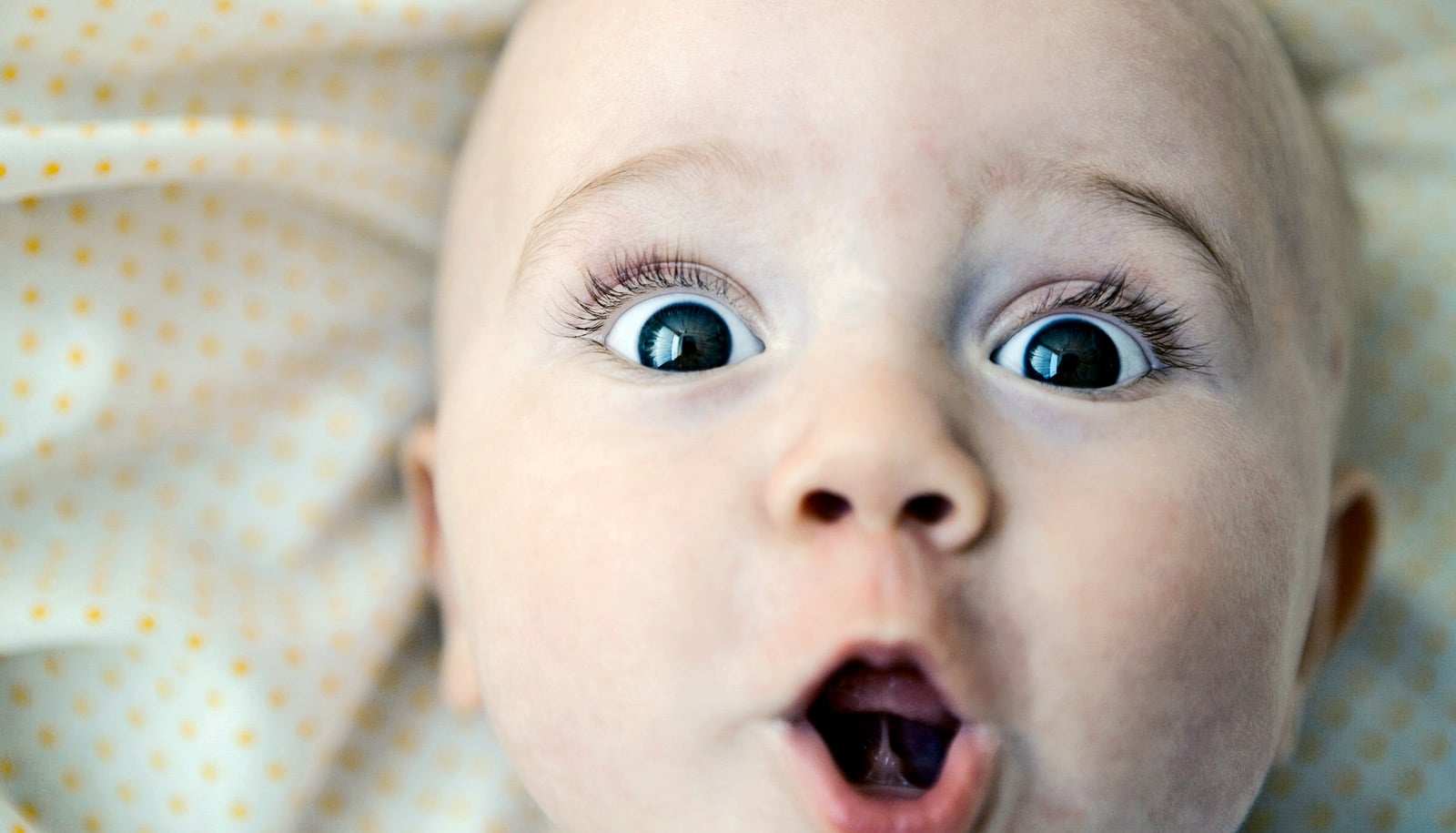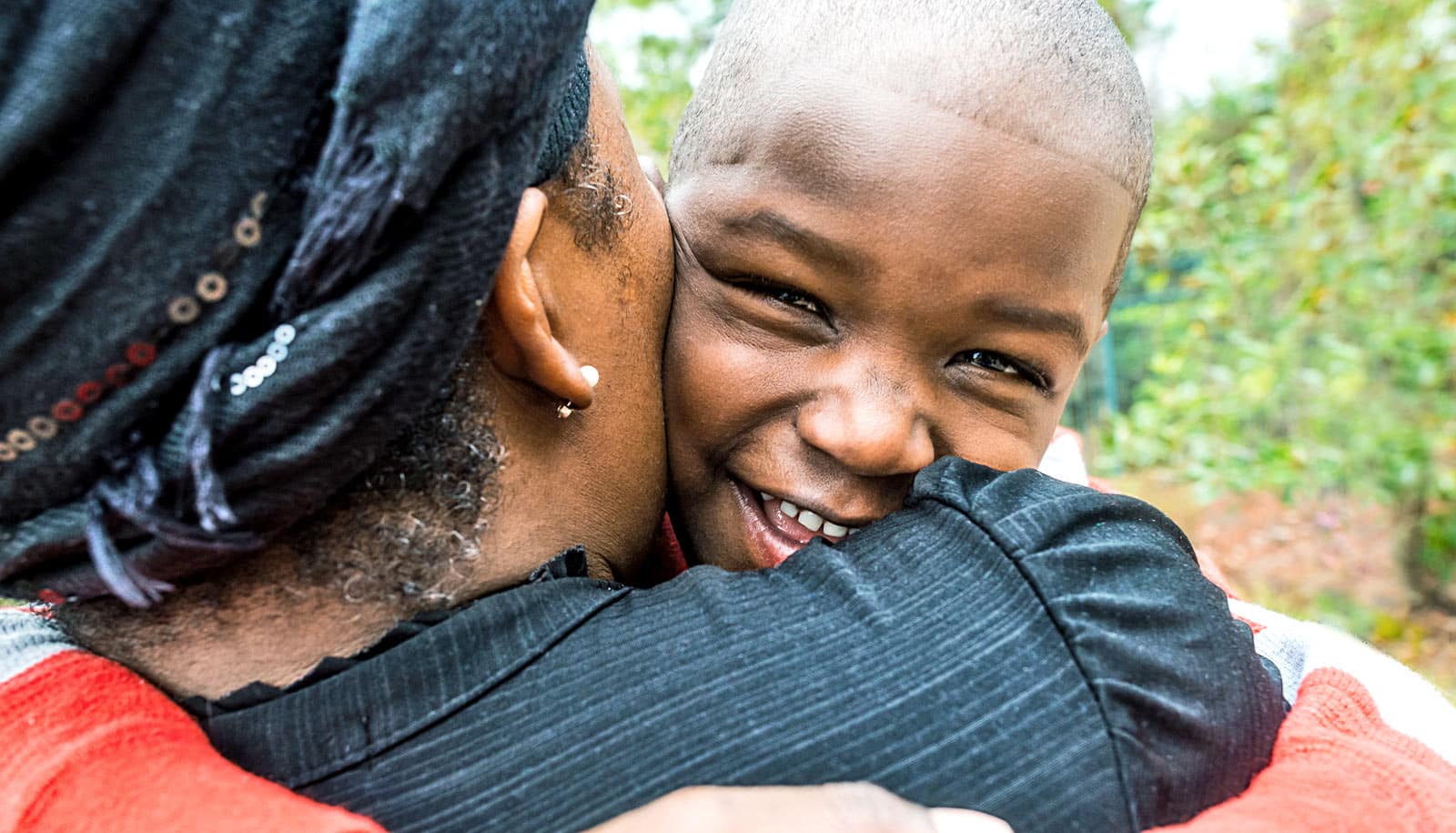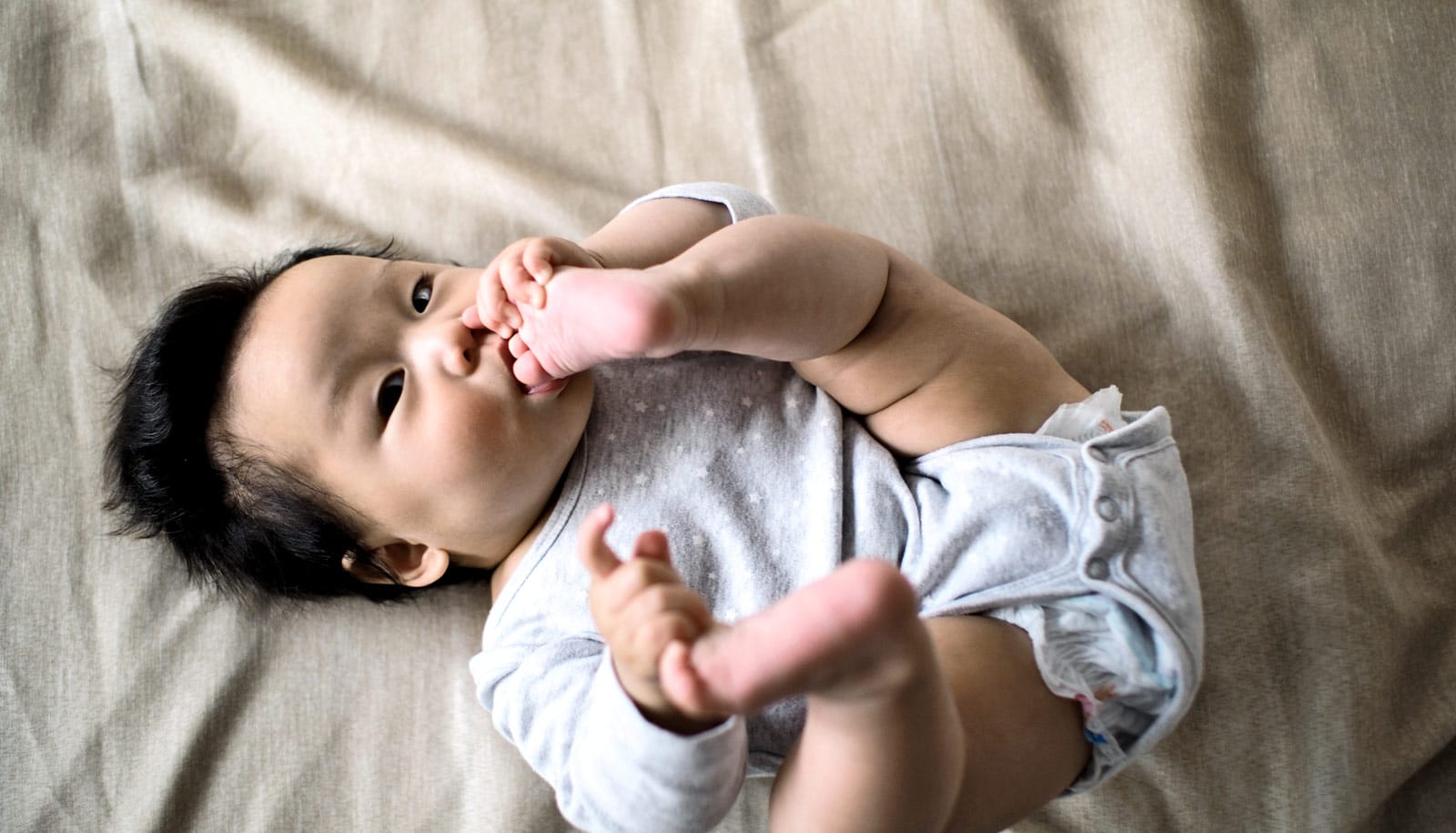The experience of touch is key to babies beginning to recognize themselves in a mirror, new research shows.
This kind of self-recognition, an important developmental milestone, usually happens when babies are about a year and half old. The new study found babies who were prompted to touch their own faces developed self-recognition earlier than those who did not.
“This suggests that babies pulling on their toes or tapping their fingers are not just playing,” says Jeffrey Lockman, a professor of human development and family sciences at the University of Texas at Austin and senior author of the paper, published in the journal Current Biology.
“They are developing self-awareness through self-directed activity. I think this work demonstrates a possible mechanism by which self-recognition can develop based on active experience that human babies naturally generate.”
The researchers began by placing small vibrating discs on the foreheads and cheeks of toddlers when they were around 14 months old, before the usual age at which self-recognition occurs. In response to the vibration, the children would reach up and touch the disc. Next, researchers turned the children to face a mirror and watched as they reached up to touch the discs.
The researchers then had the children perform the standard mirror-mark test for self-recognition in which a small mark of paint or makeup was placed on each child’s face. If the child looked in the mirror and touched the mark on their own face or said words like their name or “me,” they demonstrated self-recognition.
The researchers also observed a control group of children who were exposed to the laboratory experience with mirrors but not the vibrating discs. Both groups were comparable at the beginning of the study and observed monthly until they recognized themselves or reached 21 months.
The children who touched their face more frequently recognized themselves in the mirror about two months earlier, on average, than when children typically first begin to recognize themselves in a mirror.
“Some of these little things that we do without thinking about them, such as touching our bodies or scratching an itch, can build up to and contribute to a representation of the body and recognition of oneself,” says first author Lisa Chinn, a research assistant professor at the University of Houston.
The study challenges a longstanding assumption that self-recognition in early childhood is somehow hardwired. For a long time, scientists believed early recognition in the mirror was a built-in function of human brains and those of our closest primate relatives, versus linked to sensory or motor experiences.
The researchers say the findings may have implications for interventions for children with motor development delays.
“Interventions for infants who have issues related to motor skills are typically focused on reaching for objects in the external world and manipulating them,” Lockman says. “These findings suggest that reaching to the body may be equally important and that exploring the body is the gateway to self-knowledge.”
Additional coauthors are from Tulane University.
The National Institutes of Health supported the work.
Source: UT Austin



